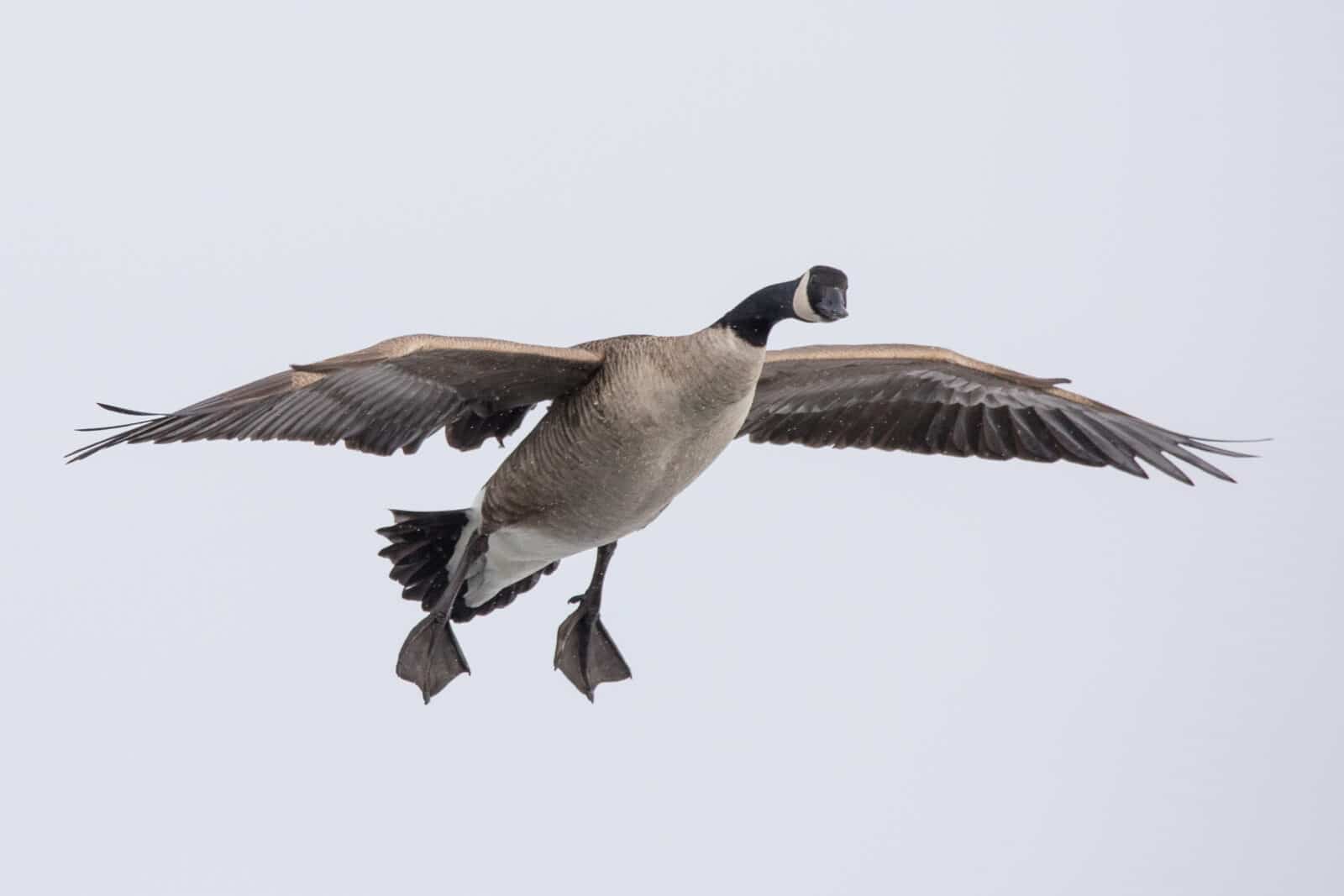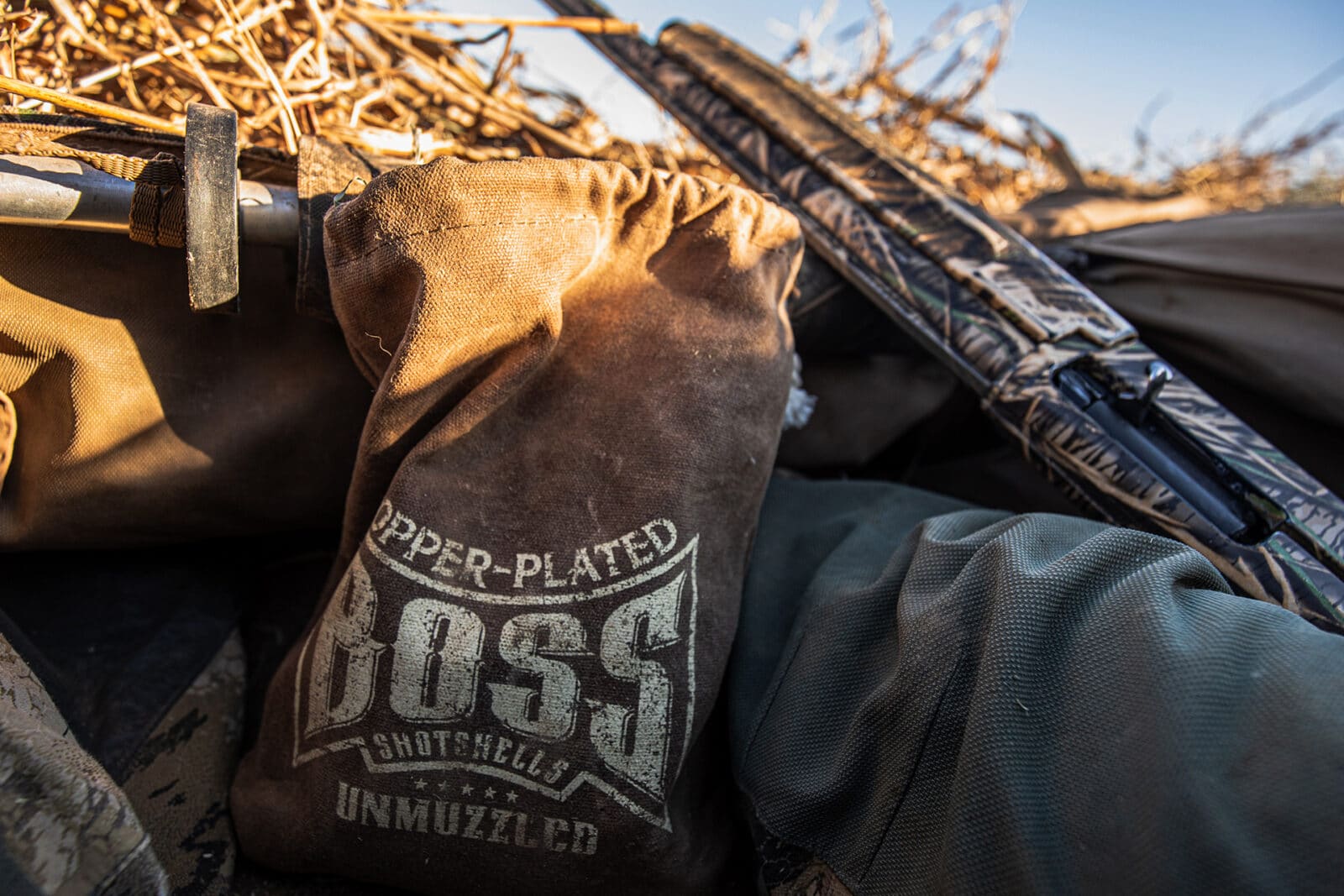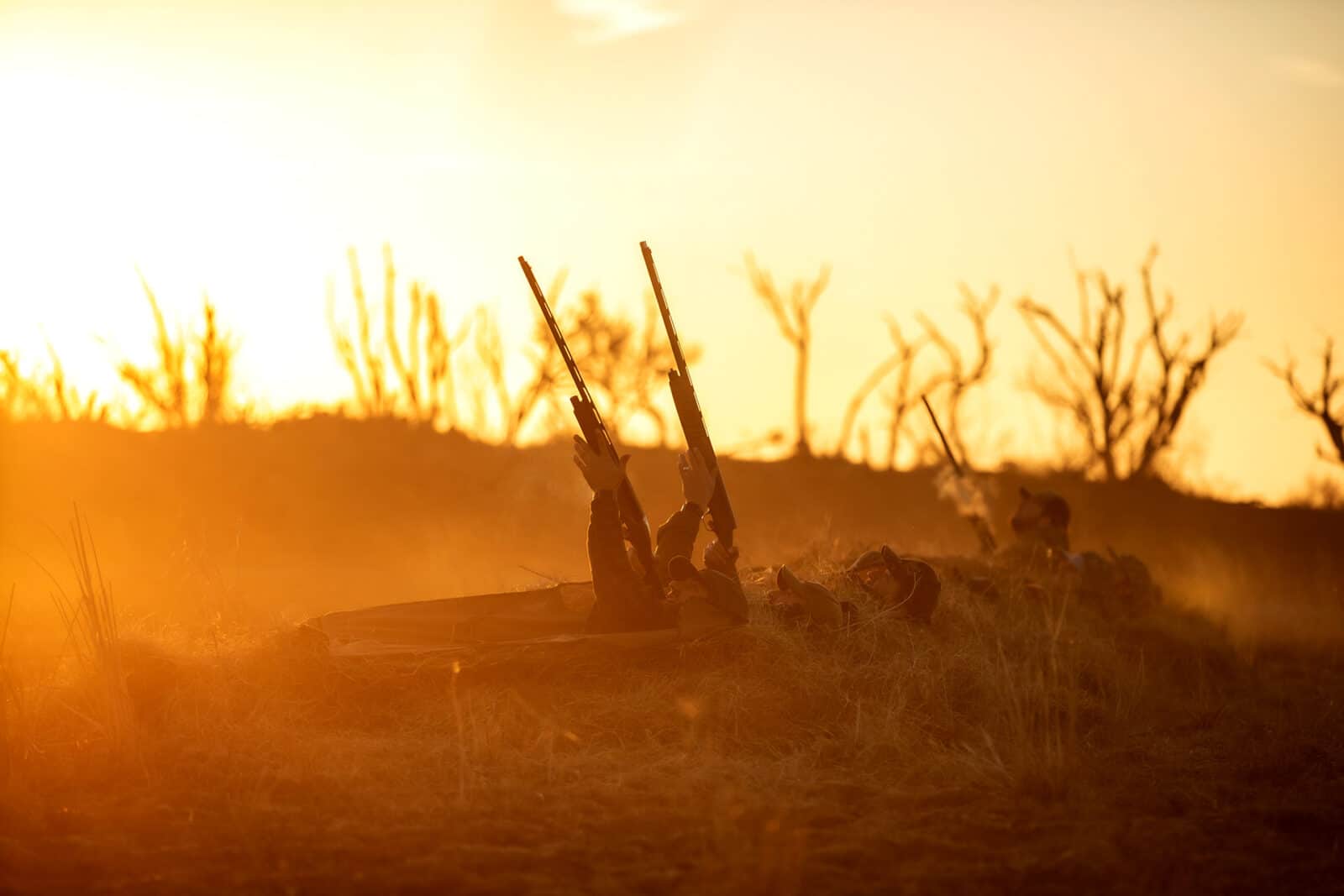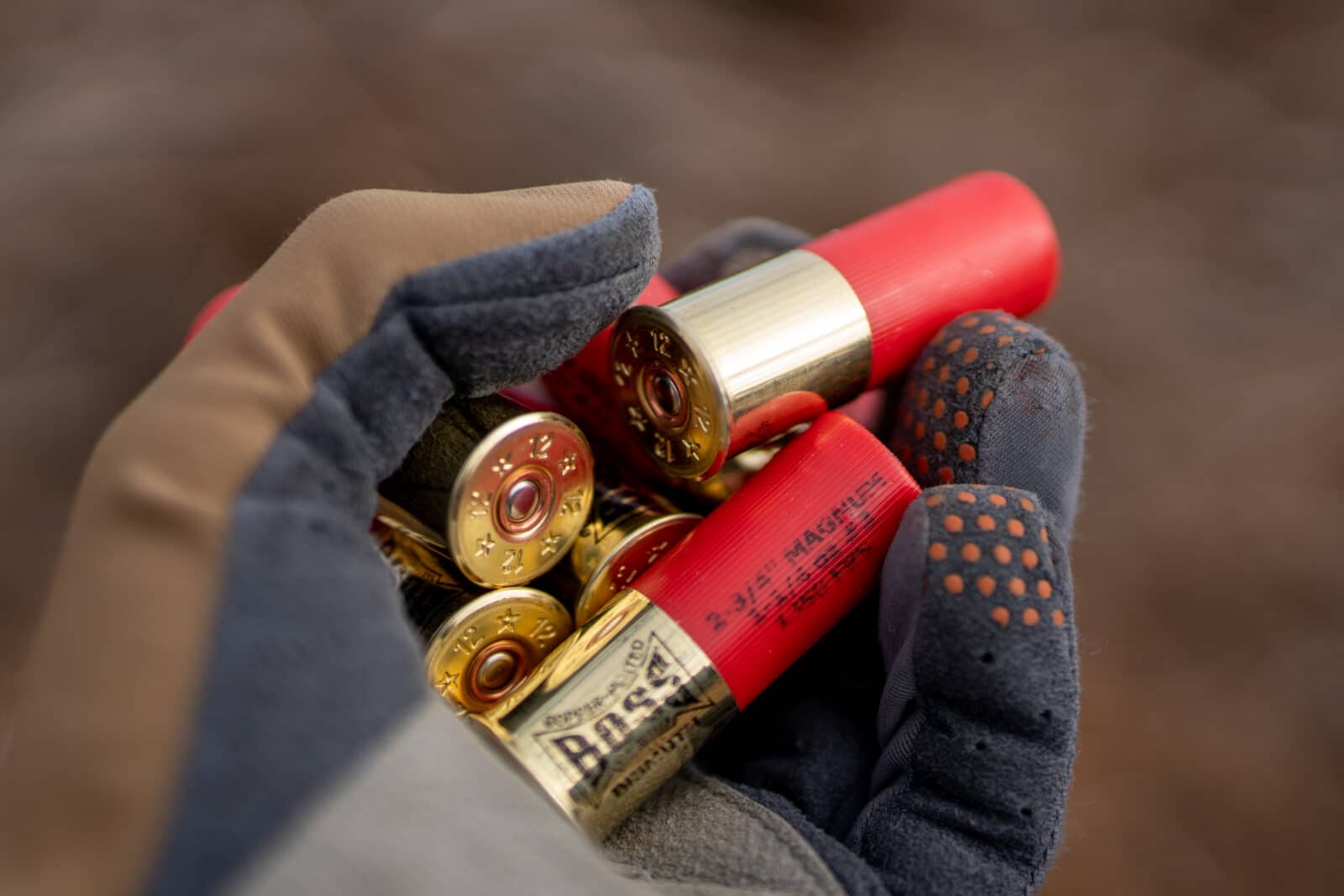We sat down with Lee Kjos from BOSS Shotshells to talk about the importance of non-toxic shot, conservation, and more.
For many waterfowl hunters, hunting birds isn’t just a casual pastime, it’s a core part of their reality. Ask anyone who has spent a long season out in the blind, and they’re likely to state, “I’m a waterfowler” instead of, “Yeah, I hunt birds from time to time.” Waterfowlers are passionate and intense, and can often be found thinking about birds, even if the season is months away. They typically care about conservation, be that in the form of habitat preservation and restoration, community education, or even the Federal Duck Stamp.
A large part of waterfowl conservation over the past few decades has centered on the topic of lead versus non-toxic shot. In 1991, the federal government banned the use of lead shot for waterfowl hunting, due to the fact lead’s toxicity was seen as a major cause of population-level declines. More than 25 years later, it’s still a contentious topic.
We sat down with Lee Kjos, part of the brains behind BOSS Shotshells to talk about trends in the waterfowl industry, conservation, reducing crippling, and the story behind BOSS.
What Is Non-Toxic Shot, and Why Is It Important?
The U.S. Fish and Wildlife Service (USFWS) defines non-toxic shot as any shot type that does not cause sickness or death when ingested by migratory birds. Lead, which was traditionally used in waterfowl loads, becomes toxic once in the bird’s digestive system. It also slowly dissolves, leaching into groundwater and creating issues not only for human water sources, but for crops and fisheries as well. Lead was banned for all U.S. waterfowl hunting in 1991, and many states prohibit lead in certain areas for hunting all species of game.
Many hunters have, at one point or another, shot lead in their lives. Some upland and turkey hunters still do. It’s cheap, effective, and has been around for a while. So what’s the big deal?
The bottom line: lead is toxic, to animals, people, and waterways alike.

Birds consume lead in a variety of ways. Upland birds may mistake pellets for seeds and pick them up. Waterfowl find spent pellets (and fishing weights/sinkers) in their own environments. The birds ingest the lead which, in certain amounts, causes issues to a variety of the birds’ systems. This toxicity is, in turn, carried on to the predatory birds, mammals, or humans who eat the birds.
Lead is also not doing the groundwater—many communities’ water source—any favors.
Currently, 13 kinds of non-toxic shot are approved by the USFWS for waterfowl hunting. Steel, arguably the most commonly used non-toxic shot, is known for efficiency, durability, and—more recently—its affordability. However, it is less dense than lead, weighing roughly one-third less than an equal-size lead pellet. Less weight means less energy, which means the shot may not have the impact (or clean kill ratio) as lead. Steel is also harder than lead, and therefore produces a denser shot pattern. HEVI-Shot is a blend of iron, tungsten, and nickel. True to its name, it’s heavy—heavier than lead—and hard, two factors that aid in velocity. It’s also commensurately expensive. Tungsten, often touted as one of the best-performing shot options, due to its heavy density, is another lead alternative, but comes at a steep cost. And then there’s bismuth-tin, another alternative that performs similarly to lead. Similar to lead in density and weight, bismuth-tin is a better tradeoff between price and performance. It’s also a favorite for older shotguns that don’t fare well with hard steel shot.
Most alternatives are more expensive than lead to produce, as the vast majority of shotgun shells are still loaded with lead. The market for non-toxic shot alternatives is constantly changing and advancing, offering an ever-evolving variety of shotshells for waterfowl hunters.
BOSS Shotshells combine either copper-plated or tungsten technology with custom hulls, hot primers, and clean-burning powders for optimal cold-weather performance.

Meet BOSS Shotshells Creative Driver Lee Kjos
Boss Shotshells Co-founder and Owner Lee Kjos is perhaps best known for his work as an outdoor and hunting industry photographer. About four years ago, his business partner Brandon Cerecke crafted the first BOSS shotshell, and the two put their brains together to create a direct-to-consumer sales model that would scale the business side and provide hunters direct access.
“I’m the only person old enough at BOSS to have shot lead,” Kjos reflects. “In 1991 when lead was banned, manufacturers started making steel… the big companies decided to go cheap. Steel is absolute garbage.” He notes many hunters continued to illegally shoot lead, as steel increased crippling. “They couldn’t stand what it [steel] did.”
Necessity is the mother of invention, and both Kjos and Cerecke realized that if current shotshell manufacturers weren’t going to address the issues at hand, they might as well have a go at it.
“If they weren’t going to make it, we were going to. We had a plan and said, ‘All right, let’s do it.’ We sat down with a white piece of paper and started to map it out, using knowledge from back in my dad’s era: the narratives… habitat and conservation first. We made a vintage-looking box, throwing back to older generations.”
Kjos sums up the brand succinctly: “BOSS is legendary, effective, lead-like performance, direct from our door to yours.”
Why Hunters Should Care About Reducing Crippling
One topic Kjos is keen to address with BOSS is crippling. He shares that, according to many waterfowl biologists he’s spoken with over the years, 3.4 to 3.7 million birds are lost a year due to crippling shots.
“If we practice shooting, shoot a much better shell—a humane, killing shell—it’s better for all involved. We could reduce that number by half,” he advocates. “If you’re going to take a life, take a life.”
Know the shot.

Conservation of Land and Animals: The Hunters’ Responsibility
Another key point Kjos touches on is hunters’ role in land and animal conservation. Using non-toxic shot factors into this, among other things. In certain areas, it is still common and legal to hunt upland birds and dove with lead shot.
“There’s a study from a Missouri biologist on lead poisoning,” he notes. “That shows an average of 20 million doves harvested a year. An additional 15 million birds are lost due to lead poisoning.”
The study Kjos references is one performed in 2007 by John H. Schulz, a resource scientist at the Missouri Department of Conservation. In the study, Schultz calculated that as many as 15 million mourning doves are killed in North America each year from lead poisoning, often from eating spent lead shot that looks like the weed seed they depend on for food.
The study noted: “Considerable information exists demonstrating that dove hunters deposit large quantities of spent lead shot around favorable hunting locations, some proportion of doves ingest lead pellets while feeding on hunted fields and most doves ingesting lead pellets eventually die from the immediate or secondary effects of lead poisoning. Although one intuitive management approach would be a national ban on lead shot for mourning dove hunting on managed public hunting areas, further research is necessary to ensure that policy development and implementation are based upon reliable information from human dimension surveys and nontoxic ammunition lethality testing.”
It’s a massive number—nearly as many birds lost to lead poisoning as are outright harvested.
“There are alternatives out there,” Kjos reminds. “Why is anyone shooting lead? Well, it’s cheap, easy to make, easy to get, and incredibly effective at killing. It’s also incredibly toxic and has to get out of the environment.”
For BOSS, habitat and conservation come first… always. The brand is involved with a number of conservation groups, and recently ran a full-spread ad in Ducks Unlimited’s magazine that was simply an image of a hen and chicks. Simply an image of birds. For the brand, it’s a way to help start changing the narrative of all images having to be of piles of birds. It’s a way to appreciate hunting for the places it takes us, the things we see, and the people we get to see it with.

Trends in the Waterfowl Community
Kjos sees a particularly strong area of opportunity to drive awareness and advocate for change in the waterfowl community: social media.
“There’s a social trend right now,” he notes. “People are hunting for images for social media. They don’t care about crippling; they just want the photograph. We need a narrative shift as a community; respectful conversations and debate.”
As waterfowlers, we need to help police our own kind, he advocates. We need to police ourselves and our friends. Offer reminders to buddies who are taking crippling shots. Ensure we’re hunting responsibly and intelligently.
“Like a lot of things, it comes down to education,” Kjos adds. “If certain things are brought up in the right light, I think a lot of people would go, ‘I never thought about it like that.’ There are a lot of people concerned about the health of this sport.”
So how can the Average Joe help? As noted above, help police yourself and your buddies. If you see them taking long shots in the blind, call them out on it. If you see someone posting irresponsible images on social media, unfollow them. It’s a simple press of your phone screen. Send emails or letters to their sponsors, noting why you, your friends, and your greater circle of people won’t use their products since they’re sponsoring irresponsible hunting. Hunters should know better.
“Ever get in a car with a friend and they don’t put a seatbelt on?” Kjos asks. “Do you tell them to put a seatbelt on?” Belting up is a natural thing we check for… it’s part of the conversation. Just like smoking cigarettes, he adds. Even if you’re an active smoker, there’s enough education in the world that you know the reality of what it’s doing to your system. It’s your choice to not wear a seatbelt or to smoke, but you’re educated as to what the ramifications are.
What if we had enough industry-wide education on lead shot, crippling, and poor behavior for social media, that every hunter knew those same ramifications?
Kjos realizes BOSS is in a position to be loud about these issues, and be proud to take a stance.
One other area of opportunity Kjos is quick to note is the influence of women in hunting. Sometimes it’s the moms who are bringing the next generation into the blind.
“When the mom hunts, the kids hunt,” Kjos notes. “Ladies could be a major groundswell of influence for lead-free… look at the culinary and the ecological reasons. They tend to appreciate and want to take care of the resource.”
So what’s the next conservation battle for the waterfowling industry? Kjos is quick to answer: lead-free and other technologies to get single-use plastics out of the environment. There’s a lot of work yet to be done, but BOSS is on it.